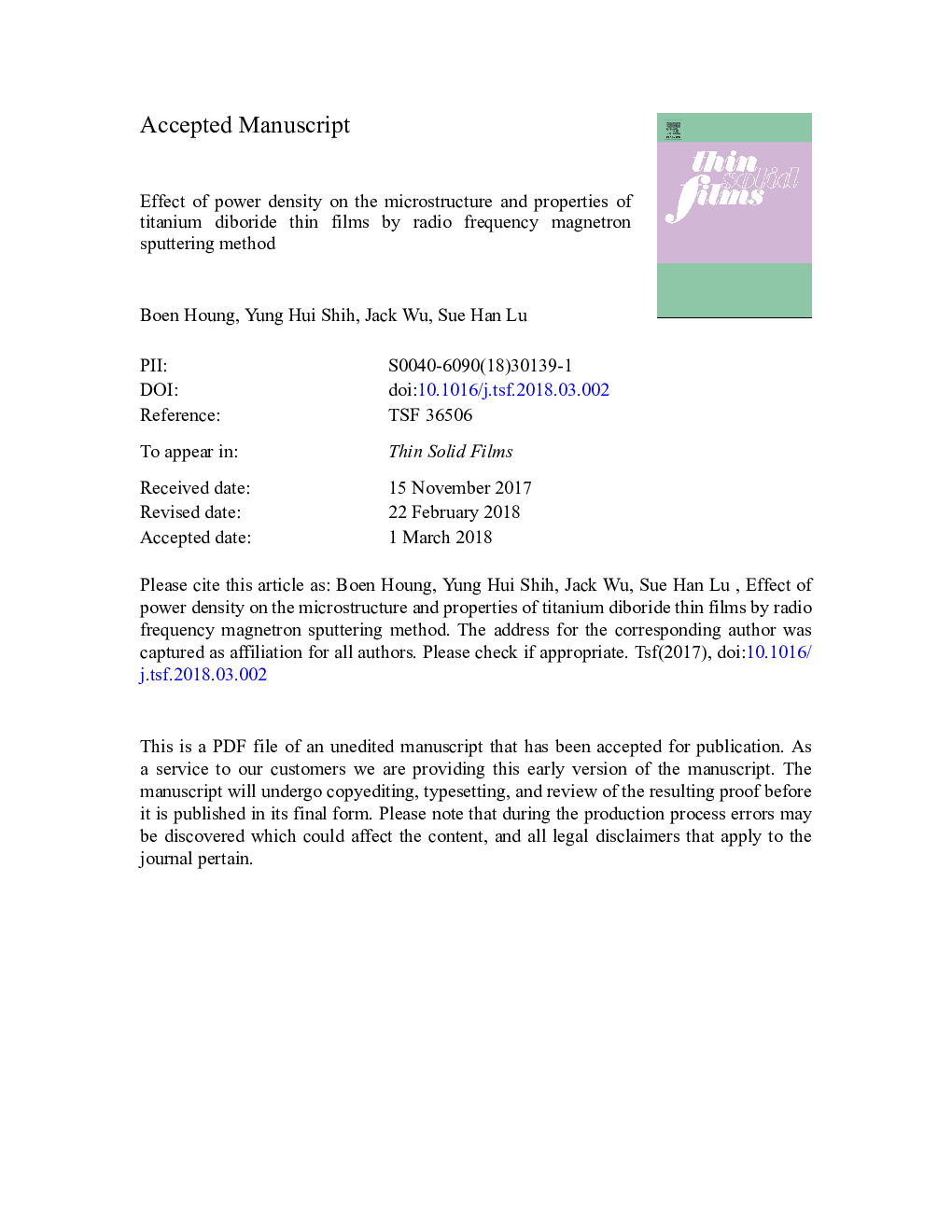| Article ID | Journal | Published Year | Pages | File Type |
|---|---|---|---|---|
| 8032541 | Thin Solid Films | 2018 | 30 Pages |
Abstract
Thermoelectric generators directly convert heat into electricity and offer a unique and very promising pathway for generating power. Titanium diboride, TiB2, is an ideal candidate for use as an electrode material in thermoelectric systems because of its refractory characteristic and excellent electrical conductivity. This study reports the effect of sputtering power density on microstructural, electrical and mechanical properties of TiB2 films fabricated by radio frequency magnetron sputtering. The TiB2 thin films were deposited at 500â¯Â°C with power densities of 5.1-12.7â¯W/cm2. As the power density increased, X-ray diffraction analysis showed a formation trend of highly crystallized hexagonal TiB2 with a (001) preferential orientation. X-ray photoelectron spectroscopy data revealed that only T-B chemical bonding states were present in the TiB2 phase. TiB2 films also exhibited a denser microstructure with a larger grain size. All three factors led to a lowering of the films' electrical resistivity. A minimum electrical resistivity of 6.5â¯Ãâ¯10â4â¯Î©cm was obtained with a free-electron concentration of 1.2â¯Ãâ¯1020â¯cmâ3 and carrier mobility of 86.7â¯cm2â¯Vâ1â¯sâ1. The hardness and elastic modulus were also found to increase with discharge power density from 19.5 to 26.6â¯GPa and from 165.2 to 196.8â¯GPa, respectively. This study demonstrated that the combination of high melting point and excellent electrical and mechanical properties makes TiB2 an ideal electrode material for thermoelectric applications.
Related Topics
Physical Sciences and Engineering
Materials Science
Nanotechnology
Authors
Boen Houng, Yung Hui Shih, Jack Wu, Sue Han Lu,
